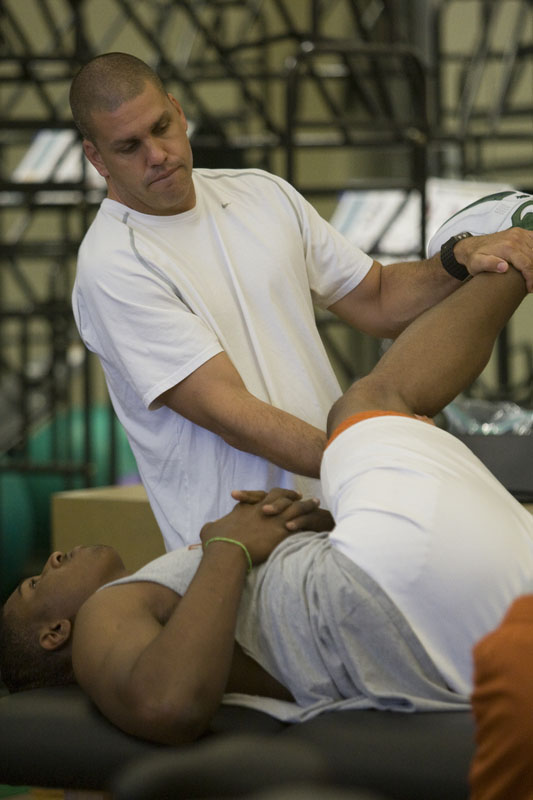Todd Wright
Todd Wright has been part of the strength and conditioning staff at the University of Texas at Austin since 1998. Although Wright played football in high school and at Springfield College in Massachusetts, he became more interested in basketball after he joined the Clemson strength and conditioning program and met Rick Barns, the men’s basketball coach at Clemson. Impressed by Barnes’ coaching skill and commitment to hard work, Wright followed Barnes to the University of Texas as the head of strength and conditioning for men’s basketball. Over his 13 full years at UT, Wright has become widely admired around the country for his ability to amplify the natural physical talents of his players through the use of sport specific techniques of conditioning.
During Wright’s last 13 years at UT, the men’s team has been selected to take part in the NCAA Tournament every year, compiling 322 wins against only 123 losses, a standard never achieved before by a UT team over the same period of time. Only five other basketball programs in the U.S. went to the NCAA Tournament in each of those years. What’s more, Texas advanced to the “Sweet 16” during five of the last ten years, won a trip to the Final Four in 2003, and reached the “Elite Eight” twice—in 2006 and 2008.
These accomplishments were made possible by the outstanding physical conditioning and genetic aptitude for the sport exhibited by such outstanding UT players as T.J. Ford and Kevin Durant, both of whom won Player of the Year titles—Ford in 2003 and Durant in 2007. During Wright’s time at UT, 16 Longhorns have been drafted by the NBA, and ten of those were selected in the first round. In fact, over a three-year span from 2006 through 2008 Texas was the only school to have had a top ten pick every year. Some of this type of success, of course, is due to recruiting, but it would not have been possible without the sophisticated training programs and personal leadership of Todd Wright.
Wright is becoming increasingly well-known because of what he calls the “Vertical Core Training System,” which is his unique approach to training the muscles which link the pelvis to the rib cage in ways that will transfer to the basketball court. Many people use the phrase “core training,” but few understand how such training can be used to enhance the power and flexibility of the muscles in ways which will improve any man or woman in his or her chosen sport. Wright believes that such training needs to be done with the body in a vertical position with the feet used to “anchor” the body and allow the target muscles to be properly “loaded.”
Watching Wright put his team through a session of Vertical Core Training is to understand why player after player will say, “I trained with weights and conditioning drills in high school, but I’ve never done anything like what we do here at Texas. I’ve never felt as quick and explosive as I do now even though I’ve gained some weight since I arrived.” An average Todd Wright workout may include such classical barbell lifts as the power snatch, but it will probably also include exercises like speed push-ups, heavy ropes, loaded vertical jumps, medicine ball drills, expanding bands, dumbbell work, and lots of patterned agility sprints focusing on quick transitions and staying low.
One of the maxims Wright lives by is that, “The will to win means nothing without the will to train,” and the intensity he exhibits as he personally puts his players through their paces is proof that he will give all he has to help them unwrap their gifts for this exciting sport and take their talent as far as they will let him. They realize this and they respect him for what he can do for them if they’ll only listen to him when he says, “You’ve got to bring it every day.”
Nor is Wright only interested in elite athletes. The father of three school age children, he worries that because some parents and coaches want to channel young athletes into just one sport the boys and girls who go down that narrow path will fail to develop the basic motor skills they would get if they practiced more sports and the training exercises specific to those sports. “Back in 1992 physical education was eliminated from the Texas public school system,” he points out, arguing that just as reading and math promote cognitive development, the physical motor patterns are only developed if a variety of sports and exercises are done as they used to be done in public schools in basic physical education classes. “My recommendation,” he says, “would be for parents to urge their children to experiment with a number of different sports. They’ll develop more completely and be less likely to sustain injuries once they begin to concentrate on one or two sports.”


